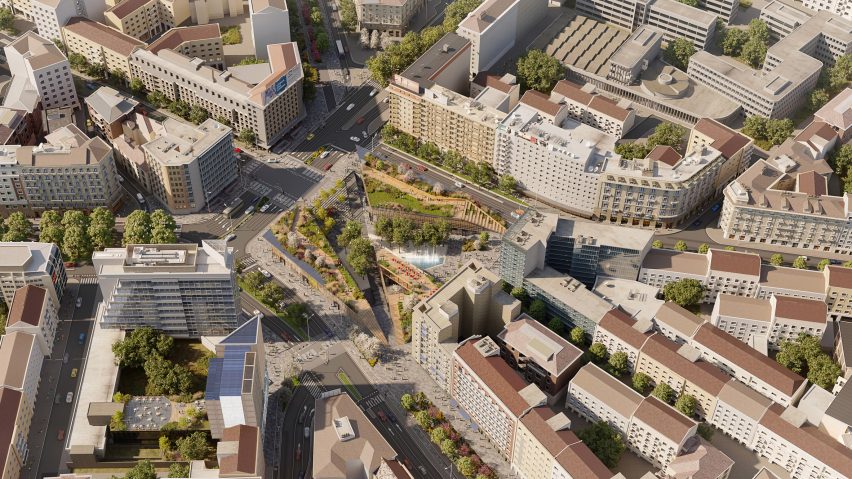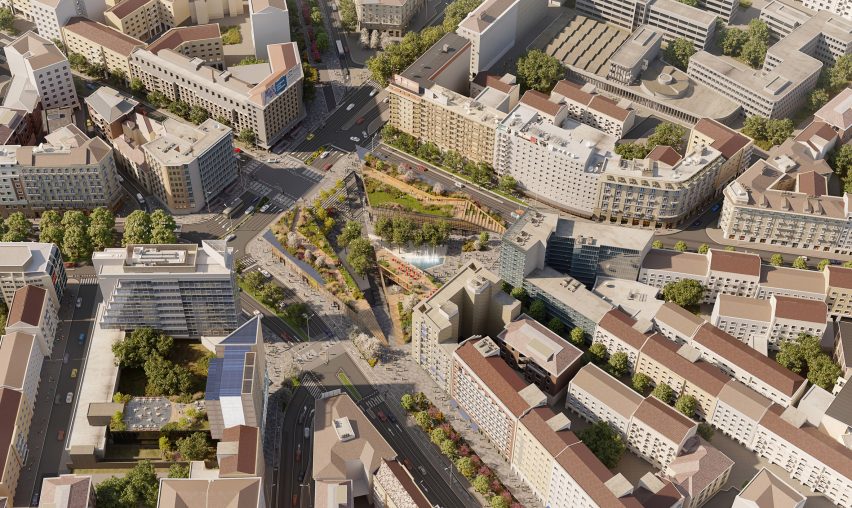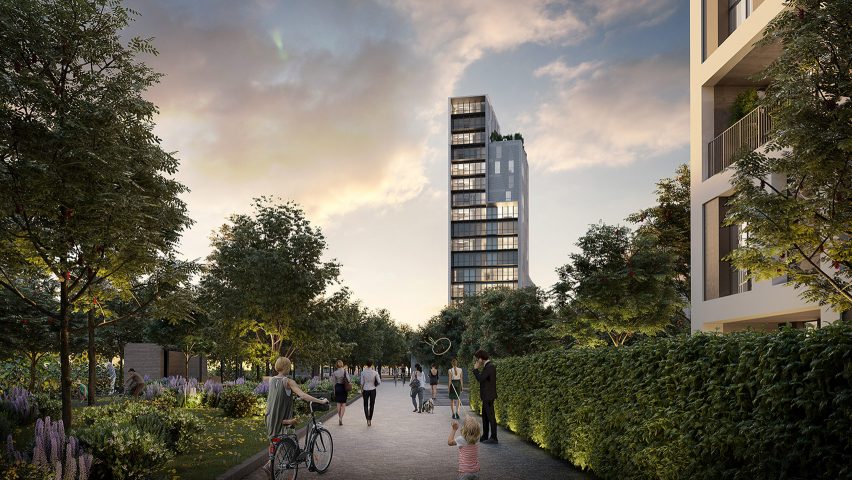
Governments have done "very little" to address climate change says head of zero-carbon development at global cities network
City leaders are doing more to eliminate global carbon emissions than national governments, according to Hélène Chartier of international network C40 Cities.
Chartier, whose organisation is coordinating the climate strategies of almost 100 cities around the world, said that politicians have made "very, very little" progress on climate since the 2015 Paris Agreement.
"Cities have been really leaders, especially when the nations were stuck with Trump," said Chartier, who is head of zero-carbon development at C40 Cities.
Former US president Trump was a climate sceptic who pulled his nation out of the landmark Paris Agreement, which committed signatories to limit global warming to 1.5 degrees Celsius above pre-industrial temperatures.
C40 Cities is a network of megacities addressing climate change
"It was very inspiring to see the US mayors really accelerate their climate action while Trump was withdrawing the US from the Paris Agreement," added Chartier, who previously worked in the office of visionary Paris mayor Anne Hidalgo.
"Without nations, it's going to be not possible [to reach net-zero] but at least mayors can pave the way." The USA has since rejoined the Paris Agreement under new president Joe Biden.
"Sometimes urban areas are more progressive so they feel that they have more operational capacity," she added. "They have more support from their residents to accelerate the transition and help nations to go in the right direction."

C40 Cities is "a network of the world's megacities committed to addressing climate change". It now has 97 member cities, which together represent over 700 million people and make up one-quarter of the global economy.
Members, which include London, Shanghai, São Paulo and Lagos, pledge to meet the objectives of the Paris Agreement, which involve halving emissions by 2030 and eliminating them altogether by 2050.
National governments who signed the Paris Agreement will meet in November at the COP26 climate conference in Glasgow to assess progress. But cities are outpacing nations in the race to decarbonise, Chartier said. "All our cities align their strategy to reach net-zero by 2050," she said. "That's their objective."
Among activities coordinated by C40 Cities is the Reinventing Cities competition, which seeks urban developments that strive for net-zero emissions. This means they emit no greenhouse gases into the atmosphere either as embodied carbon during their construction or as operational carbon during their use.
The first tranche of the 49 winning projects from the inaugural competition are about to go on site in cities including Milan, Oslo, Paris and Reykjavik.
Achieving zero emissions in operation at these projects is relatively straightforward since the bulk of energy needs can be provided by renewable sources, Chartier said. However, eliminating embodied emissions generated by materials supply chains and the construction process is "impossible," according to Chartier.

The only way to negate these emissions is via offsetting. "Reaching net-zero on embodied, you cannot do it without offsets," Chartier said. "It's totally impossible. So the question is really to push them to reduce embodied carbon to the maximum and then to offset the last part."
"Each team is really free to develop their own offsetting strategy but the most important thing is to reach net-zero operational emissions, minimise embodied emissions and offset the rest with a good offsetting system."
Opinions on offsetting schemes vary
There is disagreement over what constitutes a "good" offsetting scheme that is compatible with the concept of a net-zero building, for which there is no internationally agreed standard.
The United Nations' Race to Zero campaign defines net-zero as meaning no carbon is added to the atmosphere either directly or indirectly over the entire lifecycle, which includes materials used in a project and emissions caused by customers using a product, service or building.
Where emissions cannot be eliminated, they can be offset. But Race to Zero also states that offsetting schemes must directly capture carbon from the atmosphere, for example via biomass or direct air capture technology. Schemes that reduce or defer emissions, for example by encouraging people to switch to renewable energy or by capturing industrial carbon emissions, do not count.
Winning projects in the Reinventing Cities competition take a variety of approaches to offsetting, although Chartier said that entrants were encouraged to "go for local offsets and not just buy them."
Not all of the approaches are compatible with Race to Zero standards. The Porte de Montreuil project, designed by Atelier Georges, Tatiana Bilbao Estudio, Serie Architects and Bond Society, will be powered by an on-site geothermal power plant and photovoltaics. The L'Innesto project in Milan by Barreca & LA Varra will feature a district heat network.
The next challenge for cities, according to Chartier, is to address emissions generated by people who live in carbon-neutral developments.
"There is one path of emissions that we have to include in the strategy a little bit more," she said. "That is consumption-based emissions." This third category of emissions, after embodied carbon and operational carbon, covers emissions caused by things such as food, transport and consumption of goods.

While good progress has been made on understanding and tackling embodied and operational carbon, consumption-based emissions have been overlooked, Chartier feels.
Architects have a big role to play in reducing them, she said. "I think architects have a very important role because they don't just build a building," she explained. "They build a place where people will live."
"If you have segregation of waste, if you have composting, if you have a zero-waste restaurant, if you have parking for bikes you will accelerate your transition to net-zero.
"But if you don't provide access to these types of amenities and services, it's going to be very complicated for people. Consumption-based emissions are really something that we need to integrate into our systems and in the way we count emissions."
Despite heel-dragging by politicians, Chartier feels that there is enough momentum among city leaders, businesses and the public to force change. "The good thing is that now everybody – the businesses and the citizens – is ready to make the change," she said. "We just need to help them to make this possible."

Carbon revolution
This article is part of Dezeen's carbon revolution series, which explores how this miracle material could be removed from the atmosphere and put to use on earth. Read all the content at: www.dezeen.com/carbon.
The sky photograph used in the carbon revolution graphic is by Taylor van Riper via Unsplash.